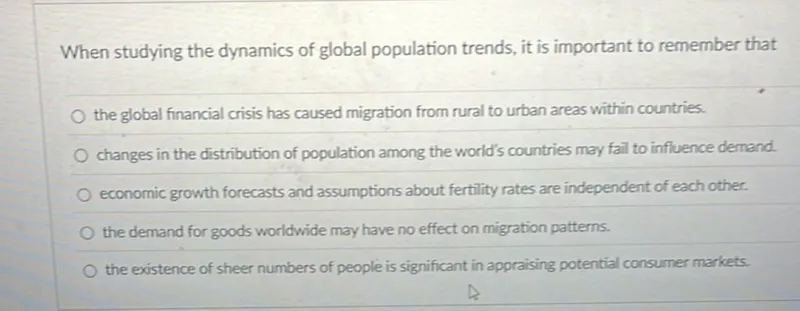Questions: When studying the dynamics of global population trends, it is important to remember that the global financial crisis has caused migration from rural to urban areas within countries. changes in the distribution of population among the world's countries may fail to influence demand. economic growth forecasts and assumptions about fertility rates are independent of each other: the demand for goods worldwide may have no effect on migration patterns. the existence of sheer numbers of people is significant in appraising potential consumer markets.

Transcript text: When studying the dynamics of global population trends, it is important to remember that
the global financial crisis has caused migration from rural to urban areas within countries.
changes in the distribution of population among the world's countries may fail to influence demand.
economic growth forecasts and assumptions about fertility rates are independent of each other:
the demand for goods worldwide may have no effect on migration patterns.
the existence of sheer numbers of people is significant in appraising potential consumer markets.





